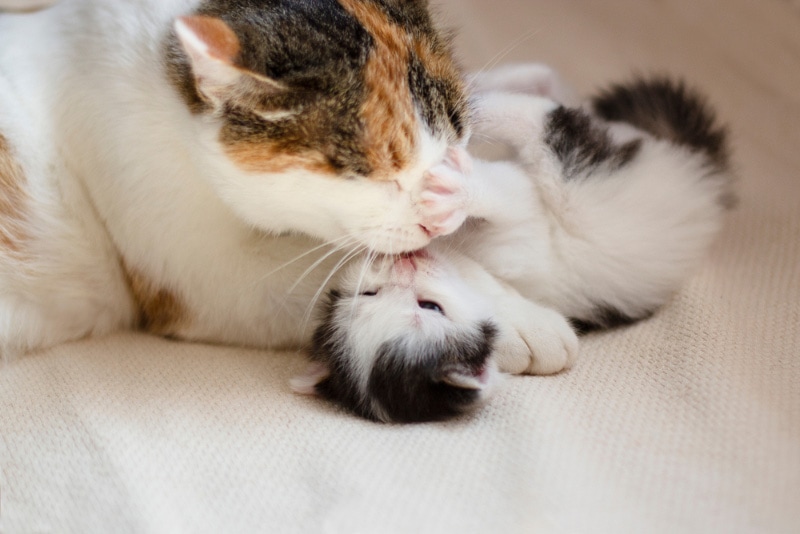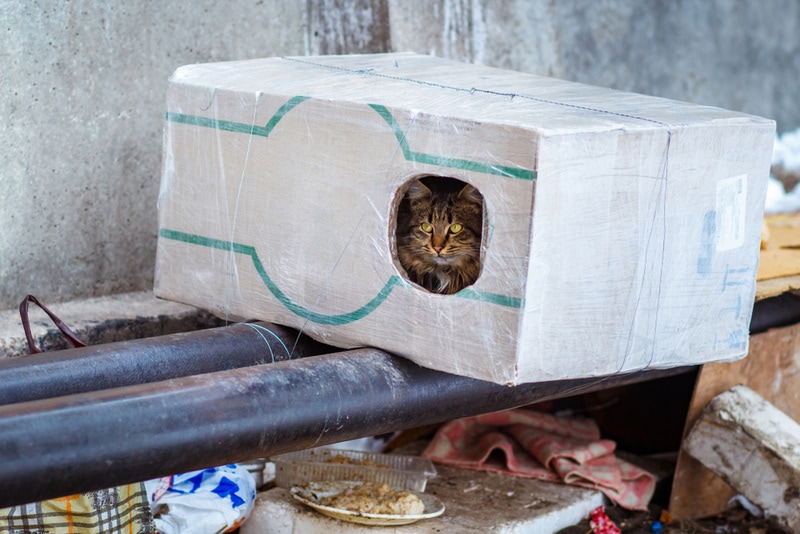What Is an American Curl Scottish Fold Mix? Care Guide & Fun Facts

Updated on
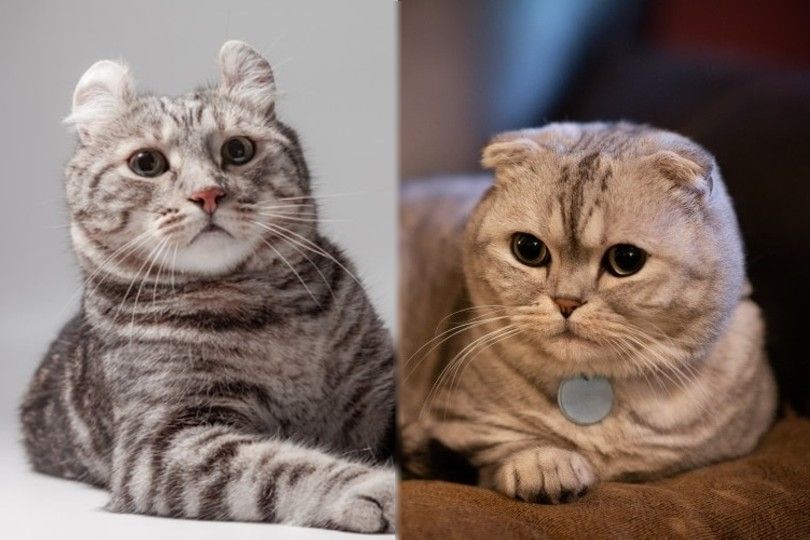
Designer cat breeds, such as the Savannah, Bengal, and Ocicat, have always been immensely popular among cat fans. Some are willing to pay as much as $125,000 just to own one of these rare felines!
And when it comes to unique cats, the Scottish Fold and American Curl make the list. Their curled and folded ears, combined with their round faces and unique fur markings, have made them highly sought after. Adding to their rarity is the fact that only a few kittens per litter end up with those adorable ears.
On paper, crossing the American Curl with the Scottish Fold makes sense. However, there are some issues to consider before getting a hybrid of these two breeds or trying to cross them yourself.
What Is an American Curl Scottish Fold?
An American Curl Scottish Fold is a hybrid of two cat breeds: the American Curl and the Scottish Fold. Since folded/curled ears are never guaranteed in litters of either breed, crossing them is an attempt at increasing the chances of getting a kitten with both features.
The mix is not officially recognized by any major cat registry, and it is still relatively rare. When bred from two purebred cats, the kittens will not be considered purebreds themselves. They’re essentially mutts, but with some features of the parents.
American Curl Cat: About the Breed
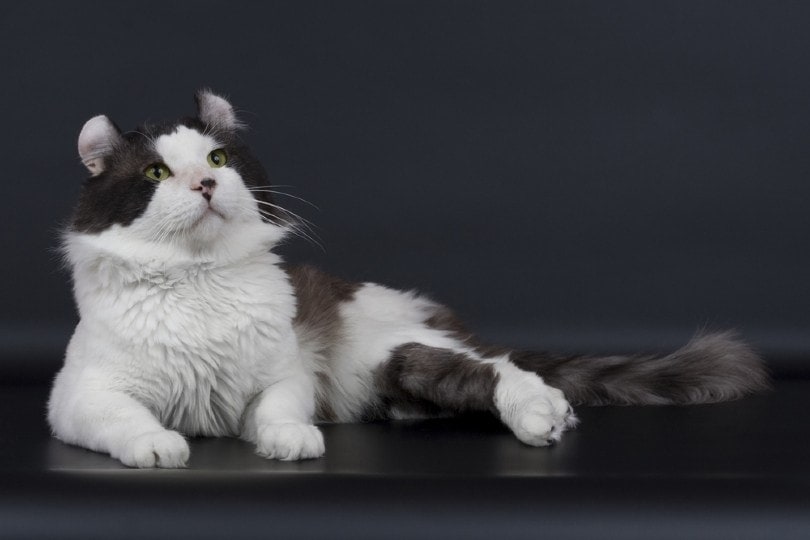
The American Curl is aptly named since they originated in California and the breed’s ears curl backward in a smooth arc. Responsible for those special ears is the Cu gene, a mutation that affects the cartilage in the ear. Breeding stock only needs one copy of the Cu gene in order to produce curled ears.
According to the Cat Fanciers Association (CFA), female Curls weigh an average of 5–8 pounds, while males weigh 7–10 pounds1. Their ears can curl back anywhere from 90 to 180 degrees. American Curls can live between 15–18 years. Curls are known to be laid-back, friendly cats that get along well with children and other pets.
- The entire American Curl breed started with a stray named Shulasmith, a black and long-haired cat whose ears were unusually curled. She was adopted by Joe and Grace Ruga in 1981 in Lakewood, California. After six months, she produced a litter with the same curled ears.
- American Curl kittens are born with straight ears, which start curling back within a week into a rosebud position. The curls “unfurl” slowly until they’re about 16 weeks, after which it becomes permanent.
- Despite being a relatively new breed, the American Curl has been recognized as a championship breed by the CFA since 1993.
Scottish Fold Cat: About the Breed
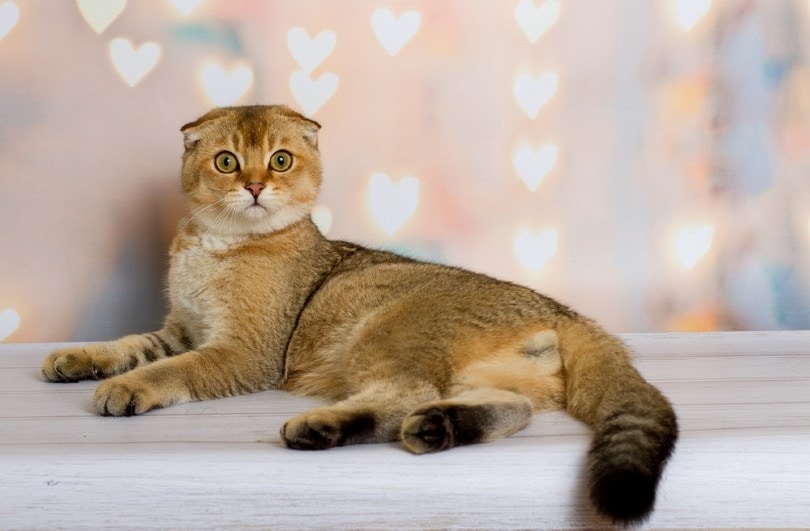
The ears of the Scottish Fold, also known as Highland Folds, are the complete opposite. Instead of folding backward, they fold forward. That’s why they’re also known as lop-eared, owl, pixie, and teddy bear cats.
Just like the very first American Curl, the first-known Scottish Fold wasn’t a pet; it was a white barn cat named Susie. She was spotted in 1961 by William Ross, a shepherd in Scotland. Susie became the foundation of the Scottish Fold breed as we know them today.
Besides their charming droopy ears, Scottish Folds look round all over. They have round eyes, round heads, and even the tip of their furry tails are slightly rounded.
Despite the breed’s name, Scottish Fold cats can also have straight ears. Those who end up with folded ears carry the Fd gene with a dominant mutation. This mutation is specific to Scottish folds.
Male Scottish Folds typically weigh more than 12 pounds, while females weigh 8–12 pounds. They can live up to 12 years.
- You’ll never know whether you’re getting a Scottish Fold kitten with folded ears until they’re about three to four weeks old!
- Scottish Folds are great for first-time cat owners. They’re sweet, quiet cats who are known to follow their owners around the house and express interest in whatever they’re doing.
- The breed has been officially recognized by the CFA since 1978, but only Scottish Folds with folded are allowed to compete in the show ring.
Potential Issues With Scottish Fold Mixes
Unfortunately, the feature that makes Scottish Folds so popular—their folded ears—is also linked to serious health problems for the breed.
Normally, cats have cartilage that supports the ears, which is why they stand straight up. Scottish Folds suffer from a condition called osteochondrodysplasia, in which their ear cartilage develops abnormally. Their ears droop because of this genetic mutation.
This same mutation can affect the cartilage and bone development in other parts of their bodies, leading to arthritis, breathing problems, and even heart disease.
The health effects of the mutation are so devastating that societies like the Cat Fancy of Great Britain and the Fédération Internationale Féline excluded Scottish Folds from their recognized breeds to discourage unethical breeding.
This is also why today’s Scottish Fold breeders only mate Scottish Folds with non-folds (e.g., American Shorthair) since breeding two folded breeds together can lead to more severe health problems.
For these reasons, crossing American Curls and Scottish Folds—two folded breeds—is not recommended. It’s possible for American Curl Scottish Fold mixes to have physical deformities, poor bone health, and other complications that can affect their quality of life.
In Summary
It’s hard not to fall in love with the cute ears and sweet dispositions of the American Curl and Scottish Fold. However, due to the health complications that can result from crossing them together, it’s best to leave these two breeds separate and look for a mix with a non-folded breed instead.
At the end of the day, what’s important is that you have a healthy and happy cat, folded ears or not.
Featured Image Credit: Left – American Curl (Nitiphonphat, Shutterstock); Right – Scottish Fold (Kellee Kovalsky, Shutterstock)


